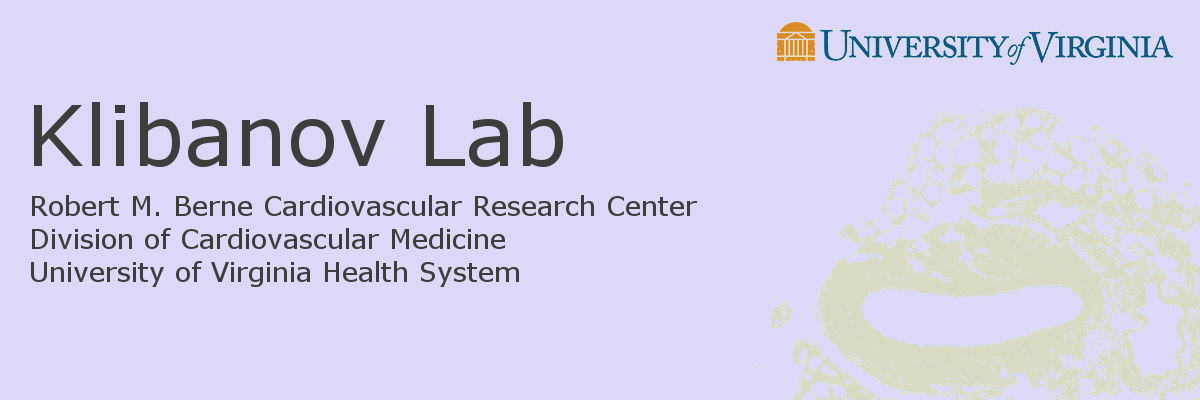
Welcome to the Klibanov Lab
Mission Statement
Ultrasound imaging is a widespread and inexpensive non-invasive diagnostic technique. Ultrasound contrast agents offer a flexible platform that can be used for diagnostic imaging as a blood pool marker (tissue perfusion), as a targeted marker for imaging of inflammation, angiogenesis, and also as adjunct microdevices for enhanced targeted drug delivery and gene therapy. In diagnostic imaging, detection of contrast material offers high sensitivity (individual micron-sized particles can be visualized in vitro and in vivo by ultrasound medical imaging systems). We prepare and analyze such ultrasound contrast materials, attach targeting ligands (antibodies, peptides) and plasmid DNA to their surface for targeting and ultrasound-enhanced delivery. Using colloid chemistry-based approaches, stable microbubbles with extended circulation lifetime are designed; polymer brush coating is applied to ensure enhanced stability.
For the most current list of Klibanov Lab publications, please click here.
Research Interests
Dr. Klibanov's lab has been active in pre-clinical research in the field of targeted imaging and drug delivery for over 25 years. Their main research interests are as follows:
- Molecular imaging contrast agents - preparation and characterization, ligand immobilization and targeting of particulate agents, microbubbles;
- Ultrasound contrast imaging - ultrasound-assisted drug delivery with drug-carrying contrast materials
- Liposomes -coupling of enzymes, proteins, antibodies and polymers to liposomes
- Antibody-mediated liposome targeting in vitro and in vivo.
- Liposomes and immunoliposomes with prolonged blood circulation.
- Covalent coupling of chelating polymers to antibodies.
- Antibody labeling with isotopes of heavy metals: applications in radioimmunoimaging, MRI and time-resolved fluoroimmunoassays.
- Application of radiolabeled antibodies for in vivo targeting.
Associated Sites at UVa
Robert M. Berne Cardiovascular Research Center (aka CVRC)
Department of Cardiovascular Medicine
Cardiovascular Training Grant (CVTG and Facebook)
Selected Publications
Klibanov AL. Microbubble contrast agents: targeted ultrasound imaging and ultrasound-assisted drug-delivery applications. Invest Radiol. 2006 Mar;41(3):354-62.
Chappell JC, Klibanov AL, Price RJ. Ultrasound-microbubble-induced neovascularization in mouse skeletal muscle. Ultrasound Med Biol. 2005 Oct;31(10):1411-22.
Klibanov AL. Ligand-carrying gas-filled microbubbles: ultrasound contrast agents for targeted molecular imaging. Bioconjug Chem. 2005 Jan-Feb;16(1):9-17.
Klibanov AL. Molecular imaging with targeted ultrasound contrast microbubbles. Ernst Schering Res Found Workshop. 2005;(49):171-91.Lipinski MJ, Perry HM, Doran AC, Oldham SN, Klibanov CA, Comment on "Conventional B2 B cell depletion ameliorates whereas its adoptive transfer aggravates atherosclerosis"., 2010; Journal of immunology (Baltimore, Md. : 1950). 186(1) 4; author reply 6. PMID: 21172871

